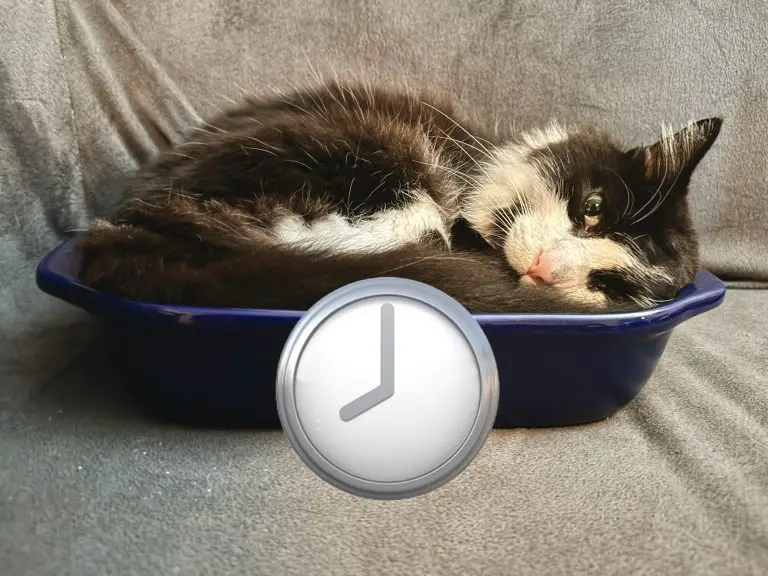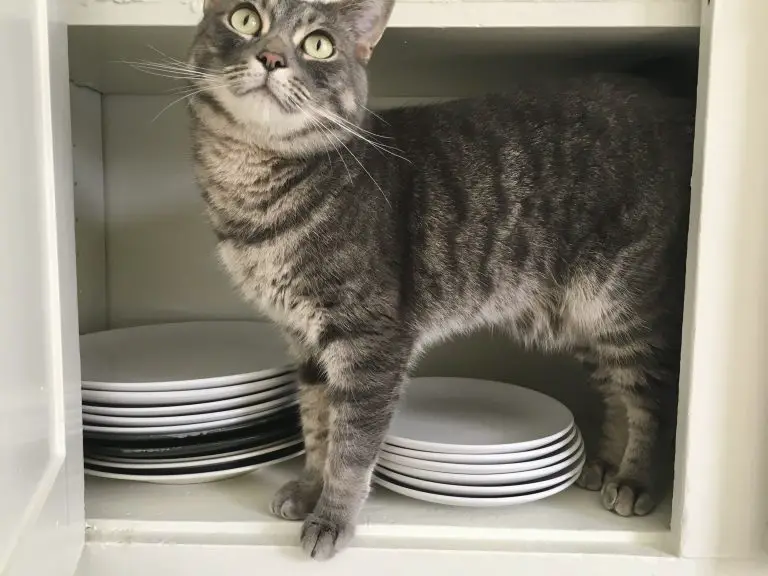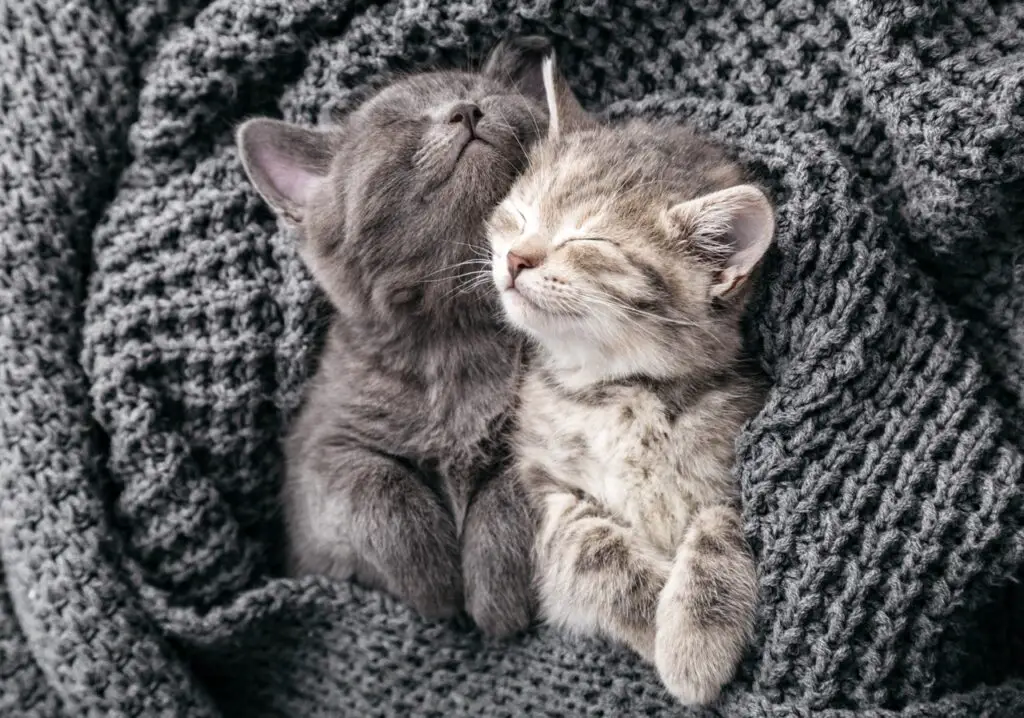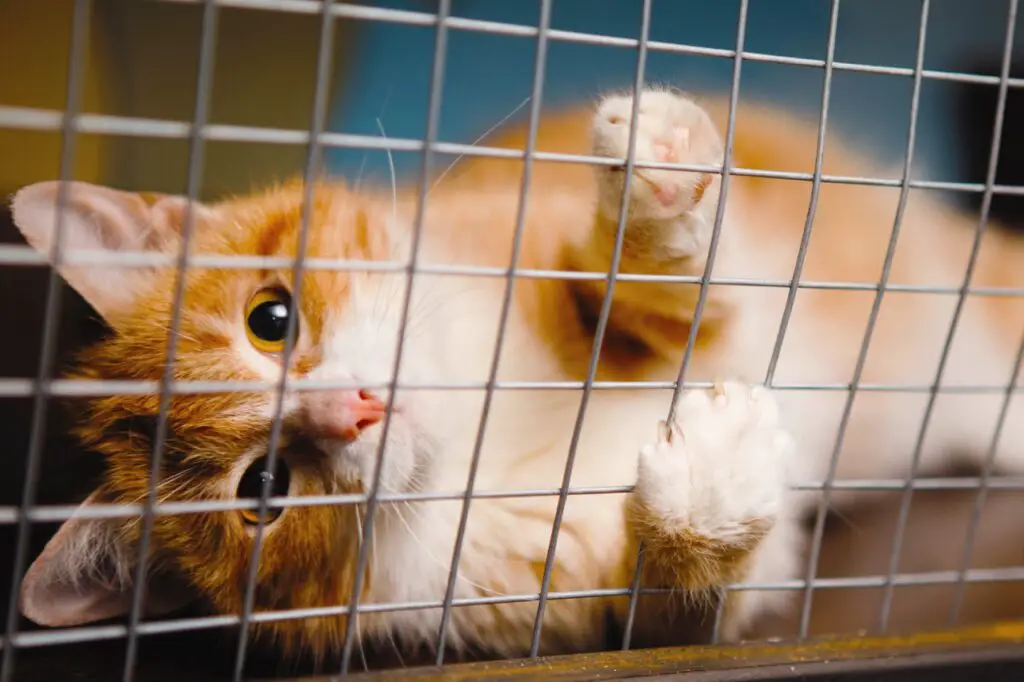What’s the Time Commitment of Having a Cat?
The amount of time needed for taking care of a cat varies according to things such as the cat’s age, health, and temperament.
How much time overall does caring for a cat require?
Caring for one cat typically requires 60 to 90 minutes on a daily basis. This includes 20-30 minutes of chores every day, plus another 30-90 minutes of bonding and play time at least 4-5 days each week. Taking into account both daily and weekly tasks, caring for one healthy adult cat will take 4-6 hours per week on average.
Those estimates apply only after your cat has fully adjusted to your home. Time requirements are higher in the first several months of starting out with a new cat. Even more so if you start out with a very young kitten.

One of the great things about cats compared to dogs is that they’re more independent and self-sufficient. For pet owners, this means less time and maintenance, and more flexibility.
For example, unlike dogs, a cat will be fine if you’re gone occasionally from early morning until late evening, as long as you’ve provided sufficient food and water.
But of course, being a responsible cat owner does involve chores and time requirements. If you decide to get a cat, you are making a long-term time commitment.
Whether you’re considering adopting a cat or you already have a cat and want to dial in how you’re budgeting your time, this article is for you. Here we break down the categories of cat care and give an estimate of how much time it typically takes for each one.
1. Time for Feeding and Related Tasks
Daily: 5-10 minutes
Feeding your cat usually takes about 5-10 minutes, twice a day for most adult cats. Some people find that three times per day is the right frequency for their cat. Cats also need access to fresh water at all times.
Weekly: Cleaning food and water bowls can take an additional 10 minutes a week.
2. Time for Litter Box Maintenance
Daily: 5-10 minutes
Scooping the litter box and sweeping the floor in the litter box area typically takes 5-10 minutes per day. Making this a daily habit can make a big difference not just with odor control, but also preventing litter from tracking into other areas of your home.
Weekly: additional 10-15 minutes
Changing the litter and cleaning the litter box more thoroughly might take an additional 10-15 minutes once per week or every couple of weeks. Giving the litter box a regular deep clean will help ensure your cat uses it consistently. Consistent litter box use is good.
3. Time for Grooming
Daily: 5-10 minutes
Brushing your cat to prevent matting and hairballs may take 5-10 minutes, depending on your cat’s coat length and the time of year. Cats shed more in hot weather so need more frequent brushing during the summer months.
Weekly: additional 15-20 minutes
If your cat is a long-hair, a more thorough weekly brushing session may be beneficial, taking an additional 15-20 minutes per week.
4. Time for Play and Exercise
Daily: 10-20 minutes
Play and exercise are important for health and preventing unwanted behaviors that can stem from boredom. It’s ok if you skip some days or spend less time, but on average you should plan to spend 10-20 minutes a few times per day engaging in play and exercise with your cat.
Weekly: additional 30-60 minutes
Longer play and training sessions can add another 30-60 minutes per week – great for a weekend routine.
5. Time for Veterinary Care
Varies: a couple hours per year at minimum
Regular vet check-ups and vaccinations will typically require a few hours per year, depending on your cat’s health and age.
Injuries or health problems can require significantly more time.
6. Time for Cleaning and Maintenance
Weekly: 20-30 minutes
Cleaning common areas where your cat spends time, such as vacuuming or lint-rolling furniture, can take 20-30 minutes a week.
Washing bedding may take another 30-60 minutes every few weeks.
7. Time for Training and Behavioral Management
Varies: 30-90 minutes per week
Time spent on training and addressing behavioral issues will depend on your cat’s behavior and your goals. Training sessions can be 5-15 minutes a day, or a few times per week.
Training is typically more frequent when a cat is young or new to you and your home. You may also want to take more time for training if you are helping young children learn how to interact with and care for your cat.
8. Time for Bonding, Acclimation, and Socialization
Varies: Much more time is needed in the first weeks and months after getting a new cat, perhaps 1-2 hours per day in the beginning.
Bonding and acclimation are critical in the early days when bringing a new cat into your home. In order to do it well, you will need to educate yourself on how to acclimate a new cat to your home, and how to make introductions to new people and new things. Doing things in baby steps and at your cat’s own pace is key.
The time it takes will depend on your cat’s temperament and background. Cats that have grown up with minimal human contact, or that have a history of trauma, will require more time and patience.
9. Time for Snuggling and Affection
Daily: 30 minutes to 2 hours
In order to maintain the bond you’ve built with your cat, you will need to spend regular time snuggling and providing affection. Such a burden, I know! Obviously, this is at the top of the list for why we get a cat in the first place – for the snuggles, purrs, and companionship.
It’s ok if it doesn’t happen every day, but it should be a daily or almost-daily thing for at least a half hour. As a bonus, this responsibility can be combined with chilling on your sofa.
10. Time for Miscellaneous Tasks
Varies: 0-60 minutes per month
Additional time may be needed for things like administering medication, grooming needs (e.g., claw trimming), flea treatments, or managing specific dietary requirements.
11. Time for Learning and Problem-Solving
Varies: 1 to several hours per month
Responsible cat ownership requires learning new things and tracking down information in order to solve problems that arise. Often this will probably mean searching for information online. Sometimes, it may mean consulting with your veterinarian.
First-time cat owners will need to spend more time learning and problem-solving in the beginning. But even seasoned cat owners are faced with questions and challenges that require putting in some research, learning, and perhaps some cat training or household DIY projects to problem-solve.
12. Caring for an Aging Cat
Varies: 0 to several hours per week
Caring for a kitten very early in life takes extra time, and often so does caring for an elderly cat. Chances of health conditions or illnesses increase as cats age, and this may mean more time in order to provide the needed care.
Some cats are lucky enough to make it all the way to the end of life without any significant needs. Other cats develop serious health conditions that require significant support from their human companions.
Last Meows
Remember that you will need to spend more time in the first months after you get a new kitten or cat, and you may have to spend more time if your cat gets injured or sick, or as your cat gets very old.
So you should plan on being more available and flexible with your time in the very beginning when you first get a cat, and toward the end of the cat’s life.
The estimates provided above can vary depending on your cat’s individual needs and your personal preferences. Yes, cats tend to be relatively low-maintenance pets compared to some other pets, but they still require a significant commitment of time, attention, and care to keep them happy and healthy.
This article has focused on time commitments of cat ownership in daily and weekly terms. But of course, getting a cat means commitment to responsible care across the cat’s entire lifetime, and that is likely to be 15-20 years. Getting a cat means you’re in it for the long haul.
Now that you know how much time you’ll need to devote to having a cat, next read up on all the responsibilities that come with cat ownership, or a breakdown of what it costs.
Read Next





